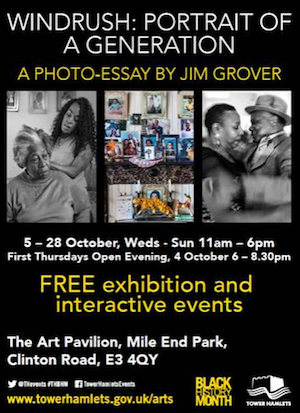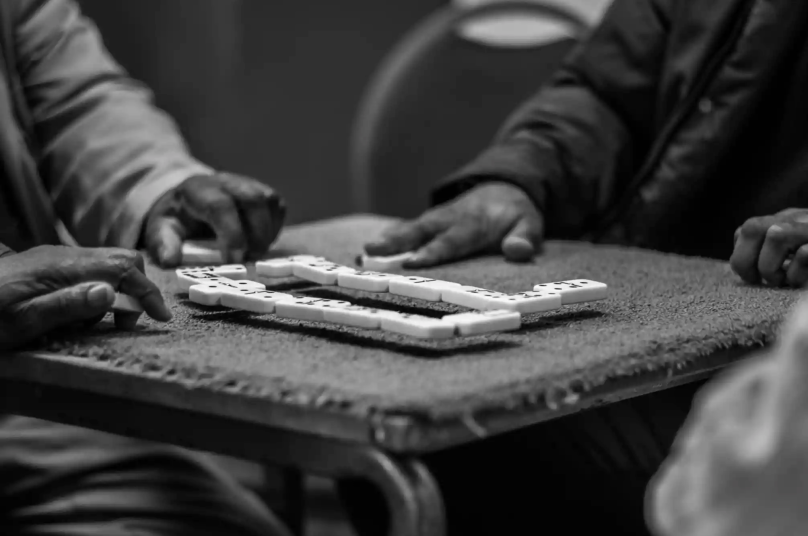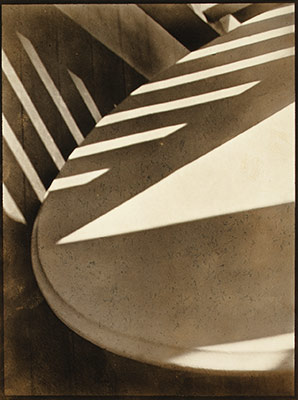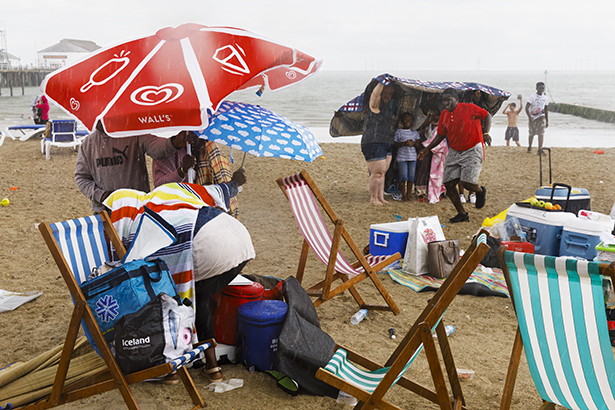Don McCullin Exhibition
Today I went to Tate Britain to see the Don McCullin exhibition. It was the first time I had visisted Tate Britain since the Westminster Terror attacks where I saw the David Hockney exhibition.
Mccullin started out in photography by accident. He said “A policeman came to a stop at the end of my street and a guy knifed him” Don McCullin took an image of gangster which were believed to me the people who killed this policeman and his images was the start of him.
“I didn’t choose photography, it seemed to choose me, but I’ve been loyal to risking my life 50 years”
Early Work
The first section of the exhibition was all about the photography that Mccullin shot in the places where he grew up which was Finsbury Park which was in partial ruin because of the second world war, he had a childhood of poverty, bigotry, and violence. He was also deeply affected by the death of his father, he had to leave school to support his family.
McCullins early work is described as full of curiosity and empathy for the subject.

This image was the start of Don McCullin. He took this image of six boys who were part of the Guvnors gang.
He went to school with these 6 lads and he took this shot of them in a bombed out building in North London.
When they were wrongfully accused of the murder of the police officer in the street Mccullin lived in he was told that he had to send the photos to the press, to which he sent them to the Observer. The editor asked Don two questions Did you shoot this? & Will you do more?

Another image from this section which really caught my eye was this one. Seeing image makes me want to go to this road and recreate its striking composition. Maybe I might not need to recreate the image, maybe this fight is still going on?

Don also covered many demonstrations, one of which was against the Cuban Missile Crisis. I think the image above is very powerful. It feels like a commentry on the police being incredibly overly-excessive when it comes to dealing with protests, in this frame we have 16 polices officers standing over what looks like a young teenage protest who is exercising his right to protest.
Berlin
 The next section we saw the work he shot of the Berlin wall being built. This was his first opportunity to document something abroad however he had to do it alone, he rung the Observer and he was told there is no commission. He was inspired by the iconic image of the German solider jumping over the barbed wire. He saw that and he decided to pay for his ticket to Berlin, out of his own savings which his account only had about £70.
The next section we saw the work he shot of the Berlin wall being built. This was his first opportunity to document something abroad however he had to do it alone, he rung the Observer and he was told there is no commission. He was inspired by the iconic image of the German solider jumping over the barbed wire. He saw that and he decided to pay for his ticket to Berlin, out of his own savings which his account only had about £70.

The image from this section that really caught my eye was this one. It’s a shot of ordinary life going on in East Berlin, life is going on as normal. But I love the fact that Mccullin has got the out of focus barbed wire in this image. We are literally getting blurred boundaries.
It was mentioned earlier that Don wasn’t offered a commission for his time. He entered the images in an exhibition and he won the British Press Award for his work and the Observer gave him a permanent contract after it.
Cyprus
So now that he had a full-time job at the Observer he was sent to cover world events. His first international commission was to go and cover the conflict in Cyprus between Greeks and Turkish Cypriots. He put himself at great personal risk when he was there.

The first image is probably his most known one from that conflict. We see this combatant welding what looks like a British submachine gun however his overcoat and flat cap instantly suggest Sicilian Mafia soldato. All we needed was a Tommy gun and this image would have a very setting. I also like the shocked expression of the man in the background, it gives a bit of depth to this shot, whereas the background would’ve looked very flat of this image was cropped on just the combatant. The contrast would be strong but there would be nothing on the background.

Another image of his was this one. This actually has a strong back story to it. He was approached by a soldier who said if you’re looking for bodies to photograph, Mccullin said no but asked what happened, the soldier said there were dead people in the house. He knocked on the door, got no answer so went in and there were 3 bodies. A father and two sons. As Mccullin stood there the rest of the family walked in. Mccullin was shocked he had no idea what they would do. There was silence in the room. But he still waited for the families blessing to take a few frames. If the family hadn’t popped in, this image would’ve only been about the death that’s in war. However, the family shows the aftermath of death. It shows the sadness.

One final image that drew me was this image of Turkish defenders awaiting a Greek attack. I feel this image really portrays chaos, the soldiers look scared, they have a variety of weapons, one of them appears to have a musket. They are standing there waiting to die and then all of a sudden we notice a dog in the middle. I also like this image because when I look at it I think of a different narrative. I feel they are going to attack, they look like the young lads of WW1 waiting to go over the top and into hell.
Vietnam

The next section was all about his work from Vietnam. This is undoubtedly was Don Mccullin is known for. Now commissioned by the Times he had 16 visits and the majority of the shots in this section were taken during 11 days of the Tet Offensive in 1968.
The image on the right is one that Mccullin took of a soldier throwing a grenade at the NVA, when he snapped it he thought he looks like a javelin thrower at the Olympics, it’s moments like this that really question the point of war where we can draw connections to peace. 5 minutes after this shot was taken, the soldier’s hand was deformed by a snipers bullet.

Perhaps Don’s most iconic image is of the shell-shocked Marine. I don’t think I have anything left to say about this image. I spoke so much about it in my previous post however this image never feels to engage with me. Even though his eyes are hidden by the shadow of his helmet it always catches me. I think the fact that we have got an image [that is freezing time] of a man who is literally frozen as he is suffering from shell-shock. We can’t help but feel sorry for this Marine who clearly wasn’t prepared for the horrors that Vietnam had. I say that, but he looks like one of the older ones.
I also find it interesting how despite taking 5 frames, the soldier never moved once, not even blinked. But then again in his shell-shock, he probably had no idea that Mccullin was there.
Don Mccullin has a scene from an interview included in his documentary where he said “I’ve got to make sure that when they look at my images, if it’s on the Sunday morning after breakfast, that is gonna hit them hard” It’s fair to say Mccullin definitely did hit people with his work, his images contributed to anti-war movements in the USA, he even had a death warrant in Vietnam.
 Another hard-hitting part of this exhibition was seeing his Nikon F camera which saved his life. We were able to see the bullet hole. It’s interesting how photography saved his life here, but photography is also what put him in most danger.
Another hard-hitting part of this exhibition was seeing his Nikon F camera which saved his life. We were able to see the bullet hole. It’s interesting how photography saved his life here, but photography is also what put him in most danger.


 There is one name which has been mentioned a lot by both Julian Hawkins & Chris Frazer-Smith. As this project is all about images that persuade the name Don Mccullin has been mentioned a lot. I’ve booked tickets to go and see his exhibition next week, in preparation I’ve decided to rewatch the documentary McCullin.
There is one name which has been mentioned a lot by both Julian Hawkins & Chris Frazer-Smith. As this project is all about images that persuade the name Don Mccullin has been mentioned a lot. I’ve booked tickets to go and see his exhibition next week, in preparation I’ve decided to rewatch the documentary McCullin. The documentary opens with McCullin talking about the first execution he photographed. It was of someone who planted a bomb in the Saigon market. He was shot at dawn by a firing squad and the officer went over, grabbed him by his hair and shot him through the head. McCullin stood there with his mouth wide open and he heard a man shout “God that was great stuff did you get it” Don didn’t get an image of this execution and he never told people at the Sunday Times because he didn’t want the paper to think that he was an amateur to of been there and not got an image to show for it. He questioned if he ever had the right to take the image of that mans murder.
The documentary opens with McCullin talking about the first execution he photographed. It was of someone who planted a bomb in the Saigon market. He was shot at dawn by a firing squad and the officer went over, grabbed him by his hair and shot him through the head. McCullin stood there with his mouth wide open and he heard a man shout “God that was great stuff did you get it” Don didn’t get an image of this execution and he never told people at the Sunday Times because he didn’t want the paper to think that he was an amateur to of been there and not got an image to show for it. He questioned if he ever had the right to take the image of that mans murder. Without a doubt, the most iconic image of McCullins work, maybe one of the most iconic images from the Vietnam war. It was taken during the Battle of Hue which was one of the longest and bloodiest battles of the war.
Without a doubt, the most iconic image of McCullins work, maybe one of the most iconic images from the Vietnam war. It was taken during the Battle of Hue which was one of the longest and bloodiest battles of the war. I feel this is the perfect way of summarising how good Don McCullin was at persuading and influencing people. After spending many years documenting the British Army in Northern Ireland he felt he was the perfect candidate to photograph the Falklands War however we all know that McCullin never got that opportunity because the boat was full.
I feel this is the perfect way of summarising how good Don McCullin was at persuading and influencing people. After spending many years documenting the British Army in Northern Ireland he felt he was the perfect candidate to photograph the Falklands War however we all know that McCullin never got that opportunity because the boat was full.


 On Friday I went around various exhibitions of the East London Photomonth with fellow students Tiana & Louise, the first exhibition we visited was the Windrush exhibition at the Art Pavillion in Mile End. Jim Grover shot this work over the last 12 months, he spent time in the Caribbean communities of South East London, he spent the time capturing the very distinctive ways in which the first generation of Caribbean migrants we’re living their lives, which we’re true to their culture and traditions.
On Friday I went around various exhibitions of the East London Photomonth with fellow students Tiana & Louise, the first exhibition we visited was the Windrush exhibition at the Art Pavillion in Mile End. Jim Grover shot this work over the last 12 months, he spent time in the Caribbean communities of South East London, he spent the time capturing the very distinctive ways in which the first generation of Caribbean migrants we’re living their lives, which we’re true to their culture and traditions.







 One task that I’ve been given on my return to Digital Photography is to visit at least 3 Events/Shows at different venues during the October/November East London Photomonth. I’m hoping to visit as many as possible and I already have my eyes on a few events.
One task that I’ve been given on my return to Digital Photography is to visit at least 3 Events/Shows at different venues during the October/November East London Photomonth. I’m hoping to visit as many as possible and I already have my eyes on a few events. The first exhibition that caught my eye was F.STOP which is held at the ESPACIO Gallery in Bethnal Green.
The first exhibition that caught my eye was F.STOP which is held at the ESPACIO Gallery in Bethnal Green. Another exhibition that caught my eye was about the transformation of the Isle of Dogs. The area has always been a favourite subject of mine, I’ve always known it as the financial district and the luxury apartments but every time I go there, I always finds something new to act as a hint to the past.
Another exhibition that caught my eye was about the transformation of the Isle of Dogs. The area has always been a favourite subject of mine, I’ve always known it as the financial district and the luxury apartments but every time I go there, I always finds something new to act as a hint to the past. On Saturday the 27th of October, there is a photo-book fair at the RICH MIX Main Venue. Ever since my photo-story project I’ve become increasingly connected with photo-books. I considering taking that project further and this would be a really good place to meet publishers.
On Saturday the 27th of October, there is a photo-book fair at the RICH MIX Main Venue. Ever since my photo-story project I’ve become increasingly connected with photo-books. I considering taking that project further and this would be a really good place to meet publishers.










 Yesterday I was the Barbican centre to look at Another Kind Of Life.
Yesterday I was the Barbican centre to look at Another Kind Of Life. Arbus is famous for photograph marginalised people of society. Her subjects included dwarfs, transgenders, nudists, giants, circus performers. People whose normality was perceived by the general populace as ugly or surreal.
Arbus is famous for photograph marginalised people of society. Her subjects included dwarfs, transgenders, nudists, giants, circus performers. People whose normality was perceived by the general populace as ugly or surreal. In 1967, Magnum photographer Bruce Davidson received a grant for his two documentation of the dire social conditions of a single block in East Harlem. Davidson took the image on the left when he was 25 years old. When looking at the photo he says “I could easily have been one of them” I feel this photo also shows on how Bruce Davidson starts off secretive his photography, then when the earned the trust of people in the lower end of the society, he breaks in becomes more involved with the subjects.
In 1967, Magnum photographer Bruce Davidson received a grant for his two documentation of the dire social conditions of a single block in East Harlem. Davidson took the image on the left when he was 25 years old. When looking at the photo he says “I could easily have been one of them” I feel this photo also shows on how Bruce Davidson starts off secretive his photography, then when the earned the trust of people in the lower end of the society, he breaks in becomes more involved with the subjects. Daido Moriyama is an urban wanderer by nature. He tends to stick the back streets and the dark interiors of dressing rooms and small stages in the interiors of Asakusa.
Daido Moriyama is an urban wanderer by nature. He tends to stick the back streets and the dark interiors of dressing rooms and small stages in the interiors of Asakusa. One project that I was interested in looking at was a set of 400 photographs that we’re taken at Casa Susanna, a resort for men who choose to dress up as women. The resort was treated as a safe-haven for both hetreo-sexuals and those who later decide to dress up a women. It was a place where they could explore and express their gender-fluid identity. These images provided an insight into a society which would’ve been considered secret in the past, but nowadays most people would consider it fairly normal.
One project that I was interested in looking at was a set of 400 photographs that we’re taken at Casa Susanna, a resort for men who choose to dress up as women. The resort was treated as a safe-haven for both hetreo-sexuals and those who later decide to dress up a women. It was a place where they could explore and express their gender-fluid identity. These images provided an insight into a society which would’ve been considered secret in the past, but nowadays most people would consider it fairly normal. The final photo I looked at was British photographer Chris Steele-Perkins. He was commissioned by New Society to document the second and third wave revival of the Teddy Boys. The Teddy Boys was the first youth subculture in Britian.
The final photo I looked at was British photographer Chris Steele-Perkins. He was commissioned by New Society to document the second and third wave revival of the Teddy Boys. The Teddy Boys was the first youth subculture in Britian.


